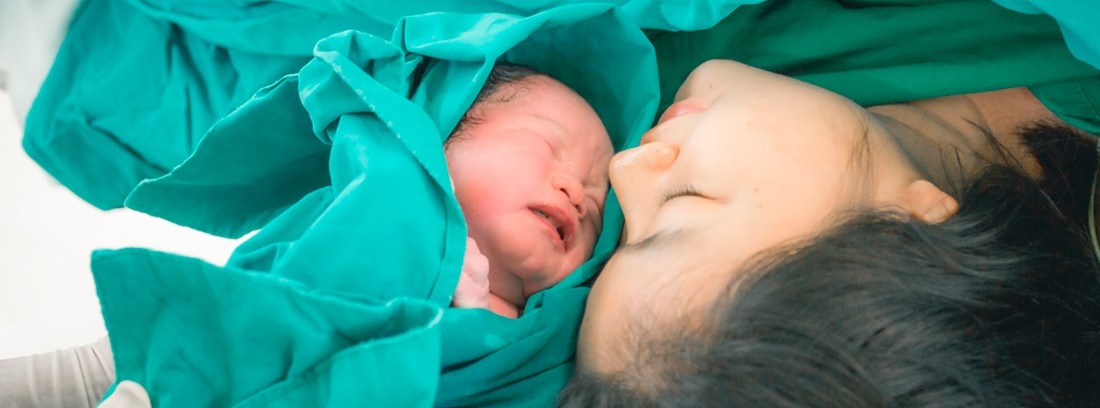Kristeller maneuver

The Kristeller maneuver It was described by the German gynecologist Samuel Kristeller in the second half of the 19th century. In 1967 he published an article describing this technique. His idea was to strengthen uterine contractions during labor by exerting pressure on the uterine fundus to promote fetal descent.
What is the Kristeller maneuver?
Is Kristeller maneuver It consists of squeezing the fundus of the uterus in a controlled way with the fists or the forearm, in such a way that it helps the descent of the head through the birth canal.
The pressure to be exerted must last between five and eight seconds and be synchronized with the uterine contraction and with the mother's push. It is important that this maneuver is performed by a specialist, midwife or gynecologist, which will know how to correctly identify the fundus, the most distal part of the fetus and thus know where to apply pressure without causing damage.
It has been a widely used maneuver but currently there is a movement very contrary to it and it is even prohibited in some countries. The Spanish Society of Gynecology and Obstetrics regulates in our country when it can be done.
Target
The objective of the use of this maneuver is to reduce the instrumentalization of labor, that is, to avoid the use of forceps, spatulas or suction cups as much as possible or to avoid performing a cesarean section. For its application, the patient must first of all be in the second phase of labor, that is to say that she has reached a complete dilation and that the fetal head has begun to descend through the birth canal. To assess the progression of this descent, Hodge's planes are used, the first plane being the highest, and the fourth plane being the lowest, that is, when the head appears from the vulva.
In cases where the head is in the foreground or second plane and a maternal or fetal complication arises that forces the delivery to be terminated immediately, a delivery cannot be instrumentalized or the Kristeller maneuver used since the risk of these maneuvers is very high and a cesarean section should be performed.
But in some cases in which the fetal head is in a third or fourth plane, we can use instruments that help us to deliver, that is, to shorten the delivery phase and thus be able to extract the fetus that presents a loss of fetal well-being or a Difficulty continuing to progress downhill.
To avoid the use of forceps or suction cups in fetuses in a third or fourth plane, in some cases it can be used the Kristeller maneuver, especially in women with little feeling of pushing for the breast or in women who do not have enough strength at the end of a long labor. In women who do not undergo epidural anesthesia, with a fetus in almost a quarter Hodge plane and who detect a loss of fetal well-being, the use of obstetric instruments to aid fetal expulsion cannot be performed because it is extremely painful and a Kristeller maneuver It can prevent oxygen depletion in the fetus brain.
Risks of the Kristeller maneuver?
You must be very cautious and experienced to perform this maneuver that it is not without risks, especially when it is not applied in the cases described. Performing when the fetus is above the background may cause some harm to the fetus.
As maternal risks we find the perineal tear in cases in which it is not known to control the force applied when the fetal head is crowning in the mother's vulva. In addition, if the pressure is too high, a maternal rib may be damaged or a bruise on the abdomen may occur.
To avoid all these risks, the Kristeller maneuver should only be performed when necessary and always by trained personnel.
They have a large medical staff of specialists in obstetrics and gynecology. In addition, when the time of delivery arrives if you want to save the umbilical cord blood, MAPFRE offers the insured the service, which facilitates the collection of the sample and assumes the maintenance costs of the cord stem cells, for their possible therapeutic use during a period of 20 years.
(Updated at Apr 13 / 2024)